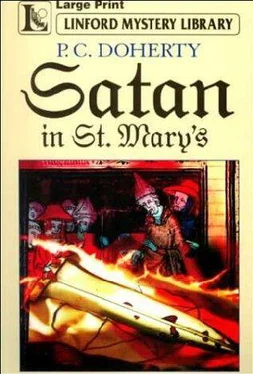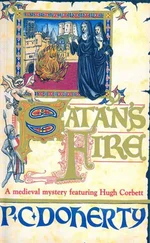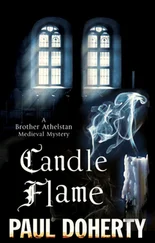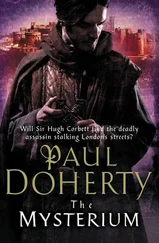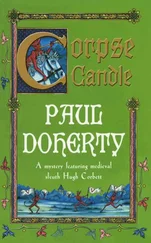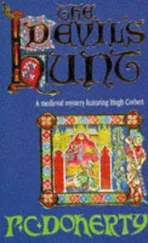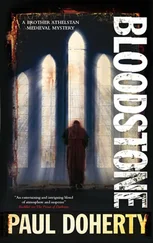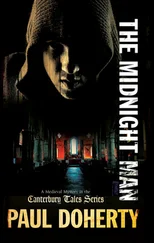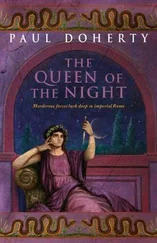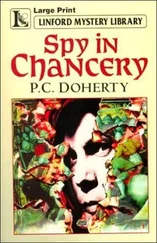Paul Doherty - Satan in St Mary
Здесь есть возможность читать онлайн «Paul Doherty - Satan in St Mary» весь текст электронной книги совершенно бесплатно (целиком полную версию без сокращений). В некоторых случаях можно слушать аудио, скачать через торрент в формате fb2 и присутствует краткое содержание. Жанр: Исторический детектив, на английском языке. Описание произведения, (предисловие) а так же отзывы посетителей доступны на портале библиотеки ЛибКат.
- Название:Satan in St Mary
- Автор:
- Жанр:
- Год:неизвестен
- ISBN:нет данных
- Рейтинг книги:5 / 5. Голосов: 1
-
Избранное:Добавить в избранное
- Отзывы:
-
Ваша оценка:
- 100
- 1
- 2
- 3
- 4
- 5
Satan in St Mary: краткое содержание, описание и аннотация
Предлагаем к чтению аннотацию, описание, краткое содержание или предисловие (зависит от того, что написал сам автор книги «Satan in St Mary»). Если вы не нашли необходимую информацию о книге — напишите в комментариях, мы постараемся отыскать её.
Satan in St Mary — читать онлайн бесплатно полную книгу (весь текст) целиком
Ниже представлен текст книги, разбитый по страницам. Система сохранения места последней прочитанной страницы, позволяет с удобством читать онлайн бесплатно книгу «Satan in St Mary», без необходимости каждый раз заново искать на чём Вы остановились. Поставьте закладку, и сможете в любой момент перейти на страницу, на которой закончили чтение.
Интервал:
Закладка:
his room and, breaking the seal, drew out a long roll of aged vellum and a short covering letter from Couville which he tossed onto the bed. He then sat and unrolled the long scroll. It was yellow with age, frayed and cracked at the edges and the fine Norman-French writing was quite faded, though still legible. He skipped the usual flowery phrases, discerning that it was a report from one of the under-sheriffs in the city to the Chancellor of Henry II. Looking at the end of the report, Corbett saw the date above the old cracked seal, 'Written at the Tower – 2nd December in the 28th year of the King's reign' which, he quickly calculated, was 1182. He took his own writing-tray and began to transcribe the main substance of the report.
"It was early in the summer of this year that one William Fitz-Osbert, a traitor and a man of evil life, began to gather people together in a coven bound to Satan, rejecting Mary's son, as he termed Christ our Saviour. This son of the devil held coven meetings beyond the city walls and, because of the absence of our good King Henry, even within the city itself. It has been established that Fitz-Osbert and his retinue celebrated secret rites, the Black Mass, in which they committed desecration of the Host and abominably treated the sacred vessels, statues and crucifixes stolen from churches in London. Fitz-Osbert preached and proclaimed that his Master, the Anti-Christ, was coming, who would sweep away the evil, as he termed the King, Holy Mother Church, and all the pillars of government and law in the country. Time and again their secret ceremonies were performed at houses in the city or deserted ruins around the Tower where they plotted to destroy the government of the King. Secret supplies of arms were smuggled into the city to equip his followers and Fitz-Osbert stirred the people up by preaching at St. Paul's Cross, he even had the temerity to take over the churchyard gardens of St. Paul's Cathedral as if they were his own fief or holding.
"The Bishop of London bitterly complained about these practices and placed Fitz-Osbert and his followers under interdict, but that evil man simply burnt the letter and promised to do the same to the sender. Whereupon the Bishop asked the Mayor and Sheriffs of London to clear Fitz-Osbert from the churchyard of St. Paul's and place Fitz-Osbert and all his coven under arrest. Just after Michaelmas in this same year the sheriffs, constables and militia from Walbrook and the Ward of the Cordwainers attempted to clear the churchyard of St. Paul's but were beaten off with considerable losses by Fitz-Osbert and his followers. Consequently, the Mayor petitioned the Lord Chancellor to use his writ to move soldiers from Dover and Rochester Castles, as well as levy men in the surrounding counties of Middlesex, Essex and Surrey to deal with the problem.
"On the Eve of All Saints, when it was established that Fitz-Osbert and his coven would be engaged in abominable and secret practices within the churchyard of St. Paul's, the forces of the King attacked the said place. This perpetrator of all evils, however, together with his lieutenants, counsellors and close companions, many of evil repute in the city, fled from St. Paul's along Cheapside and occupied the church of Saint Mary Le Bow. The rector, Benedict Fulshim, gave them secret comfort and counsel and allowed them to take over the church. It was also later proved that this Benedict Fulshim had given permission for Fitz-Osbert and his confederates to perpetrate their secret rites in the church, supplying them with consecrated hosts as well as sacred vessels for their blasphemous practices. Once in the church of Saint Mary Le Bow, Fitz-Osbert's contingent fortified the steeple with bows, arrows, axes and swords and managed to beat off any soldiers sent against them.
Accordingly, it was decided that bundles of burning sticks should be pushed through the windows of the said church in the hope that this would drive Fitz-Osbert and his coven back into the street. Once this was done, and not without loss of life, Fitz-Osbert and all those in the church attempted to flee but all were arrested and placed in the Tower.
"Two days later, under writ from the Chancellor, they were placed before the Justices of the King's Bench at Westminster. Fitz-Osbert refused to accept their authority, cursing the name of the king, the church and that of Christ, vowing that Satan would deliver him. The Justices sentenced Fitz-Osbert and nine of his followers to be drawn by the heels to Smithfield and there hanged in chains above a fire. Fitz-Osbert and his adherents kept up their cursing and pleas to their Lord (or so they termed Satan) to come and deliver them. God's justice and the king's, however, was done. Fitz-Osbert and his confederates being burnt alive at Smithfield and their ashes scattered in the city ditch.
"This Fitz-Osbert was a man of good birth and education. He was of medium stature and of swarthy countenance; the King's Justices established that he had spent part of his life in the east where he first became acquainted with the Black Arts amongst the infidels of Syria, known as the Assassins. He claimed he was chosen specially by Lord Satan and wore Satan's mark upon the palms of his hands; namely, two inverted crosses. Purple scars upon the palms of his hands. His wife, Amisia, and their children were also members of his coven but they escaped and the most scrupulous search by the Mayor and Sheriffs revealed no trace of them. "
Corbett finished transcribing and studied the report of this long dead city official before rolling it up gently and slipping it back into its leather pouch, satisfied that his earlier suspicions about Saint Mary Le Bow had been correct. He picked up Couville's note in which the old man apologized for the long delay and wished him well with his search, adding an ominous postscript that his former pupil's lack of commitment to the task assigned him was causing gossip and concern amongst his former acquaintances at the Chancery. Corbett accepted this warning, realizing that for the last few weeks he had been under Alice's spell and that he must reassert himself and complete the task, even if it was the last thing he did as a royal clerk. In all things Corbett was a professional. The long hard years of training and work in the Chancery and in the King's Bench compelled him to complete tidily and satisfactorily the matter in hand.
Eight
The next morning Corbett rose early and made his way back to Cheapside and the church of Saint Mary Le Bow. A slatternly woman, who announced that she kept house for the priest, stated that the rector was absent but, if he wanted, Corbett could wait. The clerk made his way across the churchyard and entered the main door of the church. It was deserted. Everything was as normal. The Blessed Chair was back in its proper place. No trace remained of the violent crime which had been committed there, the chairs and the benches were still stacked against the wall, so Corbett wrapped himself in his cloak and sat at the base of one of the pillars just inside the nave of the church. He crouched there staring at the long black iron bar from where Duket had hanged himself and then at the Blessed Chair back in its proper position before the high altar.
Something suddenly caught his attention. He rose, went up the church and moved the Blessed Chair to where he had found if the last time he had visited the church after it had been moved by Duket in his supposed suicide. Corbett placed the chair as closely as he remembered it from last time, then stood on it and stared at the long metal bar above him. Satisfied, he got down, moved the chair back and turned to go back down the church, almost shouting with fright at the black-gowned figure which appeared before him.
"Good morning, Master Clerk. Did I scare you?"
Corbett stared at the pale, sallow features of Bellet, the rector, trying to look calm while he endeavoured to soothe the panic which had set his heart pounding.
Читать дальшеИнтервал:
Закладка:
Похожие книги на «Satan in St Mary»
Представляем Вашему вниманию похожие книги на «Satan in St Mary» списком для выбора. Мы отобрали схожую по названию и смыслу литературу в надежде предоставить читателям больше вариантов отыскать новые, интересные, ещё непрочитанные произведения.
Обсуждение, отзывы о книге «Satan in St Mary» и просто собственные мнения читателей. Оставьте ваши комментарии, напишите, что Вы думаете о произведении, его смысле или главных героях. Укажите что конкретно понравилось, а что нет, и почему Вы так считаете.
